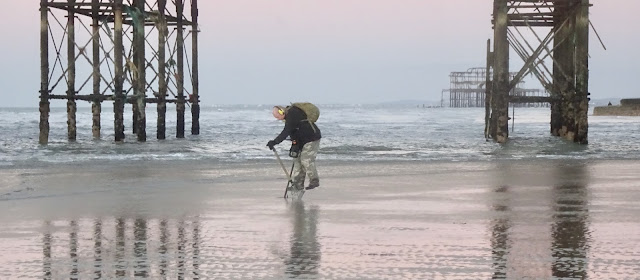Two young men were hospitalised, yesterday, with serious injuries after falling from the remains of Brighton’s iconic West Pier. Emergency services were called at approximately 12:40 after reports that the pair, who had attempted to climb the structure, had slipped into the sea. Both individuals sustained serious cuts, and one suffered a suspected dislocated shoulder. Lifeguards were able to retrieve them from the water, and they were treated at the scene by the South East Coast Ambulance Service before being taken to hospital for further care. The incident was widely reported, by the BBC, Brighton and Hove News, and on the Sussex Coast Incident News Page.
The incident triggered a large-scale response involving the Shoreham and Newhaven Coastguard teams, Brighton’s RNLI lifeboat, the South East Coast Ambulance Service, and Sussex Police. The rescue coincided with a period of intense heat across the South East, which often draws crowds to the seafront. ‘Climbing on old structures in or over water, tombstoning, or jumping into water from height is dangerous. There’s always a possibility of submerged rocks, metal, or shallow water. Don’t do it. Stay safe,’ HM Coastguard Shoreham warned in a public statement following the incident.
The West Pier, once a Victorian marvel, has been closed to the public since 1975 due to safety concerns. Over the decades, the structure has suffered repeated damage from storms, fires (two suspected arson attacks in 2003), and the relentless effects of the sea. Major collapses have occurred regularly over the last 25 years, each time further reducing the pier’s skeletal remains. The West Pier Trust clearly states the structure is ‘not stable, it is unsafe and liable to collapse,’ and it warns of ‘many sharp obstructions’ on the seabed that are often hidden and could cause serious injury. It urges people to ‘keep away from the structure at all times’ and specifically advises against swimming, surfing, kayaking, paddle-boarding, or sailing near it, as well as never going between the ruin and the yellow marker buoys.’
Generally speaking, this advice is heeded. As far as I can tell, yesterday’s incident was the first of its kind for some good long time, at least the first that has received any publicity (The Palace Pier, however, has been the scene of recent occasional rescues involving the RNLI, see this incident report and another.
(The photograph immediately above is taken from the Shoreham Coastguard, and the image above it was created by AI.)













